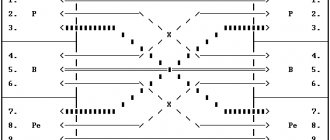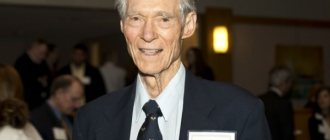Adherents of the concept of the activity approach have argued for a long time about the psychological structure of the individual in it.
By including a large number of different elements into the personality structure, such as characteristics of temperament, character, and mental processes, psychologists received an overly complex, large-dimensional model. For this reason, it was necessary to find a structure that would both receive theoretical justification and be practical.
In short, Leontiev’s theory was that the structure of a person’s personality does not come from his genes, inclinations, knowledge, or skills. Its basis is objective activity, namely the mechanism of relationships with the environment, which are realized through a hierarchy of various activities.
A person is in certain social relations. Some of them are leaders, and some are subordinates. The core of personality, thus, includes a hierarchical representation of these activities, which, in turn, does not depend on the state of the human body.
The main parameters of the personality structure are:
- the diversity of an individual’s relationships with the world through the prism of various activities;
- the degree of hierarchy of connections with the world and activities;
- a generalized structure of the subject’s connections with the surrounding world, formed by the internal relationships of the main motives in the totality of activities.
Objective circumstances form a personality through a set of activities. The individual develops only through creation, not consumption.
Brief biography of A. N. Leontyev
Leontyev Alexey Nikolaevich is a famous representative of psychology of the period 1940–70s in the USSR. He made a huge contribution to the development of Russian psychological science: the creation of a department of psychology at the Faculty of Philosophy, and then the Faculty of Psychology itself at Moscow University. Leontyev wrote a large number of scientific papers and books.
Alexey Nikolaevich Leontyev was born in 1903 in Moscow. Studied at Moscow University. Initially, he was interested in philosophy, as he had a desire to comprehensively evaluate the events that were taking place in the country at that time. However, then, on the initiative of G.I. Chelpanov, Leontyev wrote his first scientific works on psychology: a work on Spencer and an abstract on the topic “James’s Doctrine of Ideomotor Acts.” The first publications continued Luria's research on the topic of affects, associated motor techniques and were carried out in collaboration with him.
After a number of similar publications in 1929, Leontiev began to work in Vygotsky’s cultural-historical paradigm. In 1940 he defended his dissertation in two volumes, “Development of the Psyche.” The first volume included an analysis of the emergence of sensitivity with theoretical and practical justifications, which was then included in the book “Problems of Psychic Development.” For this book, Leontiev received the Lenin Prize. The second volume is written about how the psyche develops in the animal world. The main postulates were then posthumously published in the collection of Leontiev’s scientific heritage “Philosophy of Psychology”.
Leontyev began studying and publishing materials on the issue of personality in 1968. His final ideas about the concept of personality were the basis for his main work, “Activity. Consciousness. Personality", which dates back to 1974.
Freud's personality theory
The second half of the 19th century marked itself with the separation of psychology into a separate branch of science, the main task of which was to identify the basic structures of the human psyche through introspection methods in laboratories.
Therefore, the emergence of a radically new approach to the study of human individuals has had a stunning effect. The concept of personality formulated by a young psychiatrist from Vienna, S. Freud, presented the human subject not as a rational being aware of his own behavior, but as a creature in an eternal confrontation, the origins of which lie in the unconscious.
Freud's theory of personality is based on the view that the human subject is always in a state of confrontation with society, since this society drives him into a framework in which he cannot realize all his own drives and desires.
Freud believed that the process of development of the psyche is determined by the need to adapt to an environment that is predominantly hostile. He considered innate drives and unconscious aspirations to be the driving forces behind the formation of the psyche.
Freud based his psychoanalytic theory on the postulate that the foundation of the development of the psyche is the emotions and motivational sphere of the individual, and cognitive development is a consequence of motivational development, while other schools were based on the belief that the formation of the psyche is determined by the development of the intellectual sphere.
Freud argued that the human psyche combines three levels, namely: the conscious layer, the preconscious layer and the unconscious level. It is in them, as he assumed, that the key personality structures are located. The content of the unconscious layer is not understandable, while the content of the preconscious level can be comprehended by a person, but this requires significant effort.
Freud identified three elements in the personality structure: Id, Ego, Super-Ego. The component element Id is located in the unconscious layer. It is actually the driving basis for the development of the psyche, since innate unconscious inclinations are localized in it, which strive for discharge, satisfaction, and similarly determine the activity of the subject. Freud distinguished the two most essential innate unconscious inclinations - the instinct of life and death, which are in a hostile relationship with each other, forming the basis for a thorough, biological internal confrontation. The lack of awareness of such confrontation is associated with the struggle between aspirations, which occurs at the unconscious level. In addition, human behavior is determined by the simultaneous influence of both of these instincts.
A constituent element of the Ego, Freud also considered it as an innate structure. It is located simultaneously at the conscious level and in the preconscious. The content of the Id expands during the life of the child, while the content of the Ego, on the contrary, narrows, since the baby is born with the presence of the so-called “oceanic sense of Self,” which contains the entire surrounding world.
The structure of the Super-Ego is not innate, since it is formed throughout the baby’s life. The mechanism of its formation is identification with close persons of the same sex, the qualities and traits of which become the content of the Super-Ego.
Freud emphasized that there is a precarious balance between the three components of personality described.
Formation of the individual
Leontiev's theory of personality is distinguished by its abstractness.
It is formed through social relations, that is, “produced.” Leontiev was an adherent of the Marxist postulate that the individual acts as a set of social relations.
The psychological study of this concept begins with human activity, while the concepts of “action” and “operation” are characteristics of an activity, not an individual.
Theories of personality in psychology
In psychology, personality is understood as an individual who has a social role and individuality. Initially, a person is born as an individual. He has genetically programmed programs that are aimed at shaping certain characteristics and characteristics of a person. For example, the structure of the legs and spine allows a person to walk upright, the structure of the brain allows him to think intellectually, and the configuration of the arms allows him to carry various objects.
However, unlike a baby animal, a child belongs to the human race. He has a certain body structure, predisposition, program, etc. So far nothing separates him from other children, who also have no character, no social status, no habits, etc.
Any person can be called an individual from birth. However, as socialization progresses, each individual gradually becomes an individual.
In the process of growing and maturing, a person encounters various situations, integrates into social life, acquires knowledge and experience, and learns skills and rules. All this forms in him a specific set of qualities, skills, experience, views, habits, behavior, etc. The individual gradually becomes a personality.
However, in psychology there is no consensus on what personality is and how it is formed, so there are many theories:
- Psychodynamic, based on innate instincts.
- Dispositional, which is based on the theory that a person is born with a predisposition to react to certain situations. That is, a person is born with constant views, behavior and emotions.
- Phenomenological, which is based on a person’s positive attitude for the purpose of self-realization.
- Cognitive, which is based on the influence of cognitive function and intellectual development.
- Learning (or behavioral) theory, which states that personality develops depending on life experiences. Personality develops depending on the environment in which it grows.
- Analytical (founded by Jung), which states that a person bases his personality on innate qualities, the so-called archetypes.
Separately, personality theories were considered by psychologists. Everyone tried to identify the stages of personality formation, which is what the entire teaching was basically aimed at. Thus, Bozhovich identified the stages of personality development and defined with this term a person who has achieved a certain psychological development.
A. Leontiev called a personality a product of social influence, which manifests itself through activity. By interacting with objects, people, phenomena, a person demonstrates his personality.
Difference between concepts
Leontiev's theory distinguishes between the definitions of the terms “individual” and “personality”.
An individual is an indivisible, holistic formation determined by hereditary factors with its own specific characteristics. Specific characteristics are understood as characteristics that arose both as a result of heredity and as a result of adaptation to the natural environment: physical structure, temperament, eye color, etc.
The concept of personality is applicable only to a person and not from his birth, that is, a person must still become one. Until about two years of age, a child does not yet have a personality. Thus, a person is not born, but becomes.
It, in turn, begins to form when the child enters into social relations, into relationships with other people. Personality is a holistic formation, but not acquired, but produced, created as a result of the interconnection of a large number of objective activities. The child develops cultural forms of behavior, and his psyche becomes different. The emphasis in Leontiev’s theory of development is on how the subject’s motives change under the influence of culture, because the child develops many new social motives.
Motives arise in connection with the demands that society places on him. Many new motives form a hierarchy: some are more significant, while others are less significant. Leontiev's theory of personality connects its emergence with the formation of a stable hierarchy of motives. This hierarchy appears at the age of three or four years. The child’s personality begins to develop through relationships with the world around him and the objects in it. Initially, children study the physical properties of objects, and then their functional purpose, which is used in activities. For example, a child looks at a glass and holds it, and then understands that it is needed to drink, and therefore to carry out a specific activity. Thus, the stage of objective-practical activity moves on to the assimilation of the hierarchy of activities at the level of social relations.
Various definitions of the concept of personality
- Personality is a set of social relations realized in diverse activities (A.N. Leontyev).
- Personality is a “living person of flesh and blood”, woven into many relationships to the world; epi of changes of being; being transforming into an ideal form (S.L. Rubinstein).
- Personality is the subject of life: active, responsible, with the ability to temporarily regulate life and resolve life’s contradictions (K.A. Abulkhanova)
- Personality is a social individual, an object and subject of social relations and the historical process, manifesting itself in communication, in activity, in behavior (V.A. Ganzen).
- The concept of personality denotes the human individual as a member of society, generalizes the socially significant features integrated into it (I.S. Kon).
- Personality is the subject of social behavior and communication (B.G. Ananyev).
- Personality is a person as a social individual, a subject of knowledge and objective transformation of the world, a rational being with speech and capable of work (A.V. Petrovsky).
- Personality is a person as a carrier of consciousness (K.K. Platonov).
- Personality is a set of individual psychological characteristics that is formed throughout life, which determine a given person’s unique attitude towards himself, society and the world around him as a whole (Yu.V. Shcherbatykh).
- Personality is a specific person who is the bearer of consciousness, capable of cognition, experiences, transformation of the surrounding world and building certain relationships with this world and with the world of other individuals. (M.N. Shcherbakov)
- Personality - 1) a person, as a subject of social relations and conscious activity; 2) the systemic quality of an individual, determined by inclusion in social connections, which is formed in joint activities and communication (M.V. Gamezo)
The "bittersweet" phenomenon
A. N. Leontiev’s theory demonstrates this using the phenomenon of “bitter” candy. Thus, in the experiment, the child was asked to perform a obviously impossible task. For example, getting something from where he is sitting. It was impossible to do this without getting up. For this, the child was promised candy. After which the experimenter leaves the room, provoking the child to break the rules, which he does. Then the experimenter enters the room and gives the child the well-deserved candy. But the child refuses her and begins to cry. This is where the motivational conflict manifests itself: to be honest with the experimenter or to receive a reward. The main motive here was an attempt to be honest.
Personality theories Kjell, Ziegler
The work of famous researchers from America D. Ziegler and L. Kjell describes the most important directions that interpret the concept of personality:
- psychodynamic personality theory developed by Freud;
- individual theory of personality, created on the basis of psychoanalytic teaching by Adler;
- analytical theory of personality, formed by Jung;
- ego theory of Erikson, Fromm and Horney;
- a dispositional approach to personality research, which includes Cattell’s structural concept of personality traits, Eysenck’s concept of personality types and Allport’s research called dispositional personality theory;
- educational-behavioral approach introduced by Skinner;
— social-cognitive theory of personality by Rotter and Bandura;
— phenomenological theory of personality formation by Rogers et al.
D. Ziegler and L. Kjell decided to cover in their book the concepts of personality formation that made the most significant contribution to modern psychology.
They are convinced that teachings about personality should reflect the basic theses of the theorist about the origin of man. It was this principle that the authors were guided by when writing the book.
The work also describes the main strategies used by scientists to study personality phenomena. The authors set out in the book practical methods of using correlation analysis, the anamnesis method, as well as formal experiments in order to be able to assess the validity of theoretical assumptions. In addition, they described the various assessment methods (eg, interviewing, projective tests) through which data about an individual is typically collected. Knowledge of these methods will allow readers to comprehend the value of assessment in measuring the differences of subjects.
The main advantage of this work can be considered that when presenting each approach, the authors provide arguments for and against.
We are on Telegram! Subscribe and be the first to know about new publications!
Personality development parameters
The stage of development of a child’s personality in Leontiev’s theory is determined by the following parameters:
- The position that the child occupies in the system of social relations.
- Leading type of activity.
The sign of leading activity is not a quantitative indicator, that is, this is not the activity that the child most likes to do. A leading activity is one that corresponds to 3 properties:
- New species develop and arise within it. In particular, educational activity in the early school years stems from plot-role-playing.
- It is in it that mental processes are mainly restructured or formed.
- In this activity, major changes occur in the child’s personality.
Thus, the first significant theoretical position in Leontiev’s theory is the presentation of activity as a unit of psychological analysis.
Behavioral theory of personality
The main idea of behaviorism is to consider human behavior as a process of adaptation of the simplest living creature to the world around it. From the point of view of this theory, human behavior is simply a system of reactions to an incoming external stimulus.
The main objectives in personality research in this theory were:
- identification and description of various types of human reactions to environmental influences;
- study of the formation process of these reactions;
- predicting human behavior, his reactions and determining the stimulus that caused this reaction.
Note 1
According to the views of researchers who adhere to this theory, the main process in personality development is mechanical learning, which does not require human activity and volitional efforts.
Hierarchy of activities
Leontiev further developed S. L. Rubinstein’s concept of the external, which realizes itself through internal conditions. This means that if a person has activity, then the internal (subject) acts through the external and thereby changes itself.
Personality develops in the process of interaction of a large number of activities that are interconnected by hierarchical relations and act as a set of hierarchical relations.
The topic of the psychological characteristics of this hierarchy remains open. To interpret the hierarchy of activities within the framework of psychology, A. N. Leontyev uses the terms “need,” “emotion,” “motive,” “meaning,” and “sense.”
Leontiev's activity theory in some way changes the meaning of these concepts and the generally accepted analogies between them.
The motive replaces the need due to the fact that before satisfaction the need does not have an object and therefore it needs to be identified. Once identified, the need acquires its objectivity. At the same time, the imagined, conceivable object becomes a motive, namely, it acquires its stimulating and directing activity. Thus, when a person is in contact with objects and phenomena of the world around him, he learns their objective meaning. Meaning, in turn, is a generalization of reality, and it correlates with the world of objective historical phenomena. This is how a hierarchy of activities becomes a hierarchy of motives.
Leontiev further developed Vygotsky's concept. The theories of Leontiev and Vygotsky (pictured below) brought to the fore the determining influence of the social factor on the individual, while minimizing the importance of the inherited, natural factor.
However, in contrast to Vygotsky, Leontiev’s psychological theory further developed Rubinstein’s activity concept. What was his main task?
The key idea of A. N. Leontiev’s theory of personality can be assessed based on the main critical problem that he solved. It consisted in the assimilation of a naturalistic understanding of personality and lower mental functions, which are restructured through mastery of them. In this regard, Leontyev could not include a natural component in its structure, since it cannot be existential, empirically existing. Probably, Leontiev considered all Russian concepts that had developed in those days as naturalistic, although they actually contained an interpretation of the formation of the essence of personality.
Article “Personality.Individual. according to Leontiev"
A.N. Leontyev. Individual and personality
Studying a special class of life processes, scientific psychology considers them as manifestations of the life of a material subject. In cases where we mean an individual subject (and not a species, not a community, not a society), we say an individual or, if we also want to emphasize its differences from other representatives of the species, an individual.
The concept of “individual” expresses the indivisibility, integrity and characteristics of a particular subject that arise already at the early stages of life development. The individual as a whole
is a product of biological evolution, during which not only the process of differentiation of organs and functions occurs, but also their integration and mutual “coordination”.
Individual
- This is, first of all, a genotypic formation. But the individual is not only a genotypic formation; its formation, as is known, continues in ontogenesis, during life. Therefore, the characteristics of an individual also include properties and their integrations, which develop ontogenetically. We are talking about the emerging “alloys” of innate and acquired reactions, about changes in the substantive content of needs, about the emerging dominants of behavior. The most general rule here is that the higher we climb the ladder of biological evolution, the more complex the life manifestations of individuals and their organization become, the more pronounced the differences in their innate and lifetime acquired characteristics become, especially since, so to speak, , individuals are individualized.
So, the concept of an individual is based on the fact of indivisibility, integrity of the subject and the presence of its characteristic features. Representing a product of phylogenetic and ontogenetic development in certain external conditions, the individual, however, is by no means a simple “tracing copy” of these conditions; it is precisely a product of the development of life, interaction with the environment, and not the environment taken in itself.
All this is quite well known, and if I nevertheless started with the concept of the individual, it is only because in psychology it is used in an overly broad sense, leading to an inability to distinguish between the characteristics of a person as an individual and his characteristics as a person. But it is precisely their clear distinction, and, accordingly, the underlying distinction between the concepts of “individual” and “personality” that constitutes a necessary prerequisite for the psychological analysis of personality.
Our language well reflects the discrepancy between these concepts: we use the word personality only in relation to a person, and, moreover, starting only from a certain stage of his development. We don't say "animal personality" or "newborn personality." No one, however, finds it difficult to talk about an animal and a newborn as individuals, about their individual characteristics (excitable, calm, aggressive animal, etc.; the same, of course, about a newborn). We are not seriously talking about the personality of even a two-year-old child, although he exhibits not only his genotypic characteristics, but also a great many characteristics acquired under the influence of the social environment; By the way, this circumstance once again testifies against the understanding of personality as a product of the intersection of biological and social factors. It is curious, finally, that in psychopathology cases of split personality are described, and this is by no means just a figurative expression; but no pathological process can lead to a split in the individual: a split, “divided” individual is nonsense, a contradiction in terms.
The concept of personality, just like the concept of an individual, expresses the integrity of the subject of life; personality does not consist of pieces, it is not a “polypnyak”. But it represents a holistic formation of a special kind. Personality is not an integrity determined genotypically: one is not born as a person, one becomes a person. That is why we do not talk about the personality of a newborn or the personality of an infant, although personality traits appear at the early stages of ontogenesis no less clearly than at later age stages. Personality is a relatively late product of the socio-historical and ontogenetic development of man. S.L. wrote about this, in particular. Rubinstein.
This provision can, however, be interpreted in different ways. One of its possible interpretations is as follows: an innate, so to speak, individual is not yet a completely “ready-made” individual, and at first many of his traits are given only virtually, as a possibility; the process of its formation continues during ontogenetic development until all its features are developed, forming a relatively stable structure; personality is supposedly the result of the process of maturation of genotypic traits under the influence of the influences of the social environment. It is this interpretation that is characteristic in one form or another of most modern concepts.
Another understanding is that the formation of personality is a suigeneris process that does not directly coincide with the process of lifetime changes in the natural properties of an individual in the course of his adaptation to the external environment. Man as a natural being is an individual possessing one or another physical constitution, type of nervous system, temperament, dynamic forces of biological needs, affectivity and many other traits, which in the course of ontogenetic development are partly developed and partly suppressed, in a word, change in a variety of ways. However, it is not changes in these innate properties of a person that give rise to his personality.
Personality
there is a special human formation, which just as cannot be deduced from his adaptive activity, just as his consciousness or his human needs cannot be deduced from it (Marx says: the production of consciousness is the production of needs), a person’s personality is also “produced” - created by social relations , into which the individual enters in his activity. The fact that at the same time some of his characteristics as an individual are transformed and change is not the cause, but the consequence of the formation of his personality.
Let us express this differently: the features that characterize one unity (individual) do not simply pass into the features of another unity, another formation (personality), so that the first are destroyed; they are preserved, but precisely as characteristics of the individual. Thus, the characteristics of an individual’s higher nervous activity do not become characteristics of his personality and do not determine it. Although the functioning of the nervous system is, of course, a necessary prerequisite for the development of personality, its type is not at all the “skeleton” on which it is “built on.” The strength or weakness of nervous processes, their balance, etc. manifest themselves only at the level of mechanisms through which the system of relations of the individual with the world is realized. This determines the ambiguity of their role in the formation of personality.
To emphasize what has been said, I will allow myself a slight digression. When it comes to personality, we habitually associate its psychological characteristics with the closest, so to speak, substrate of the psyche - central nervous processes. Let us imagine, however, the following case: a child has a congenital dislocation of the hip joint, dooming him to lameness. Such gross anatomical exclusivity is very far from the class of features that are included in the list of personality traits (in their so-called “structure”), however, its significance for the formation of personality is incomparably greater than, say, a weak type of nervous system. Just think, peers are kicking a ball in the yard, and a limping boy is on the sidelines; then, when he gets older and the time comes to dance, he has no choice but to “lean up the wall.” How will his personality develop under these conditions? This is impossible to predict, impossible precisely because even such gross exclusivity of an individual does not unambiguously determine his formation as a person. By itself, it is not capable of giving rise to, say, an inferiority complex, isolation or, on the contrary, benevolent attentiveness to people - and in general any actual psychological characteristics of a person as an individual. The paradox is that the prerequisites for personality development are, by their very essence, impersonal.
Personality, like the individual, is a product of the integration of processes that carry out the life relations of the subject. There is, however, a fundamental difference in that special entity that we call personality. It is determined by the nature of the very relations that give rise to it: these are social relations specific to a person into which he enters in his objective activity. As we have already seen, with all the diversity of its types and forms, they are all characterized by the commonality of their internal structure and presuppose their conscious regulation, that is, the presence of consciousness, and at certain stages of development also the self-awareness of the subject.
Just like these activities themselves, the process of their unification - the emergence, development and disintegration of connections between them - is a process of a special kind, subject to special laws.
The study of the process of unification, linking the activities of a subject, as a result of which his personality is formed, is a major task of psychological research. Its solution, however, is impossible neither within the framework of subjective empirical psychology, nor within the framework of behavioral or “deep” psychological trends, including their newest variants. This task requires an analysis of the subject’s objective activity, which is always, of course, mediated by the processes of consciousness, which “stitches” individual activities together. Therefore, demystification of ideas about personality is possible only in psychology, which is based on the doctrine of activity, its structure, its development and its transformations, its various types and forms. Only under this condition is the above-mentioned opposition between “personal psychology” and “psychology of functions” completely destroyed, since it is impossible to contrast personality with the activity that generates it. The fetishism dominant in psychology is also completely destroyed - attributing the property of “being a personality” to the very nature of the individual, so that under the pressure of external food only the manifestations of this mystical property change.
The fetishism in question is the result of ignoring the most important position that an object, entering a new system of relationships in society, also acquires new - systemic qualities, which only form a real characteristic of the personality: psychological, when the subject is considered in a system of activities that carry out his life in society, social, when we consider him in the system of objective relations of society as their “personification”.
Here we come to the main methodological problem, which lies behind the difference between the concepts of “individual” and “personality”. We are talking about the problem of the effectiveness of the qualities of social objects in which they exist...
For scientific personality psychology, this... is of decisive importance. It radically changes the understanding of its subject and destroys the ingrained patterns in it, which include such heterogeneous traits or “substructures” as, for example, moral qualities, knowledge, skills and habits, forms of mental reflection and temperament. The source of such “personality schemes” is the idea of personality development as a result of layering lifetime acquisitions on a certain pre-existing metapsychological basis. But it is precisely from this point of view that personality as a specifically human formation cannot be understood at all.
The real way to study personality is to study those transformations of the subject that are created by the self-movement of his activity in the system of social relations. On this path, however, from the very beginning we are faced with the need to rethink some general theoretical principles:
One of them, on which the initial formulation of the problem of personality depends, returns us to the already mentioned position that external conditions act through internal ones. “The position according to which external influences are connected with their mental effect indirectly, through the personality, is the center from which the theoretical approach to all problems of personality psychology is determined...” (S.L. Rubinstein). The fact that the external acts through the internal is true, and, moreover, unconditionally true in cases where we consider the effect of one or another influence. It’s another matter if you see in this position the key to understanding the inner as a person.
The author explains that this internal itself depends on previous external influences. But this does not yet reveal the emergence of personality as a special integrity that does not directly coincide with the integrity of the individual, and therefore there remains the possibility of understanding personality only as an individual enriched by previous experience.
It seems to me that in order to find an approach to the problem, one should turn around the original thesis from the very beginning: the internal (the subject) acts through the external and thereby changes itself. This position has a very real meaning. After all, initially the subject of life generally appears as possessing, to use Engels’s expression, “an independent force of reaction,” but this force can act only through the external, and in this external its transition from possibility to reality occurs: its concretization, its development and enrichment - in a word , its transformations, which are transformations of the subject himself, its bearer. Now, that is as a transformed subject, he acts as a refractor of external influences in his current states.
Of course, what has been said is only a theoretical abstraction. But the general movement it describes is preserved at all levels of development of the subject. I repeat once again: after all, no matter what morphophysiological organization, no matter what needs and instincts an individual has from birth, they act only as prerequisites for his development, which immediately cease to be what they were virtually, “in themselves,” as soon as the individual begins to act . Understanding this metamorphosis is especially important when we move on to a person, to the problem of his personality.
Personality as a special reality
In Leontiev’s theory of development, personality goes beyond the boundaries of the concept of the psyche into the area of interrelations with the world. It represents a certain special reality; it is not an ordinary biological formation, but a higher education, historical in its essence. At the same time, a person is not a person initially, from birth. It develops with the subject throughout his life and first appears when he enters into social relations.
Humanistic and cognitive theories of personality
The humanistic theory of personality is a theory of personality, according to which the main source of personality development is its innate desire for self-actualization.
The humanistic theory of personality is based on two directions: “motivational” (A. Maslow) and “clinical” (K. Rogers).
In accordance with the theories of K. Rogers, the human psyche includes two leading tendencies inherent in nature:
- “self-actualizing tendency” - contains those personality traits that will be developed in the process of life;
- “organismic tracking process” is a mechanism for monitoring the development of a person’s personality.
In accordance with the personality theories of A.G. According to Maslow, personality development is based on the following needs:
- physiological (food, drink, sleep, etc.);
- safety and security needs;
- the need for a certain social status and belonging;
- self-esteem (competence, self-esteem, dignity);
- needs for self-actualization (beauty, creativity, etc.)
Needs represent a pyramid (from low to high). This pyramid is based on physical needs. Only with the satisfaction of the lower need can the individual experience the next need.
The cognitive theory of personality is a theory of personality developed by J. Kelii, according to which the main source of personality development is the external environment and society around him.
J. Kelia's theory of personality is based on the fact that intellectual processes have a significant impact on human behavior and the development of his personality. A special place is given to cognitive processes that form each person’s own personal structure of perception and understanding of the surrounding world and society.
Personality structure
Personality in Leontiev's theory is endowed with structure. Appearing gradually, it undergoes development throughout life. In this regard, there is a separate structure of the individual and the structure of the personality, which is characterized by the process of differentiation of activities.
Personality has the following characteristics:
- The set of real relationships of a person that fill his life. They constitute the real basis of personality. However, not every activity present in the life of a subject is part of it. A person can accomplish many things that have a secondary relationship to life.
- The degree of development of higher connections of actions (motives) among themselves and their hierarchy. The direction of personality formation is at the same time the direction of its ordering.
- Type of structure: monovertex, polyvertex, etc. Not any goal or motive can become the highest point, because it is necessary to withstand the load of the apex of the personality.
Thus, the pyramid will not represent the usual picture with a base at the bottom and a gradual narrowing, but an inverted pyramid. The life goal that is at the top will bear the brunt of the load. The leading motive will influence how strong the structure is, so it must be such that the structure can withstand.
Leontiev argued that imagination alone is the source of the search and construction of mechanisms that will allow a person to comprehend his own behavior.
Psychological structure
Psychologists do not consider the structure of personality in isolation from the fundamental knowledge of science.
Mental properties
Psychology of human personality
Mental properties are the basis of personality structure in psychology. This includes such personality components as:
- Directionality. This is what a person strives for and what goals he has. This includes his needs, motives and interests.
- Temperament is a biologically determined feature of the functioning of the nervous system. It affects the dynamics of mental processes. At the moment, scientists distinguish the following criteria by which it is possible to systematize types of temperament: sensitivity (sensitivity), reactivity (the degree of emotional reaction to certain stimuli), resistance - the ability to withstand unfavorable conditions, plasticity/rigidity - a person’s ability/inability to adapt to changes in the environment world, extroversion, introversion and excitability.
- Character. Denotes the ways of human behavior and his attitude to the world around him. This includes individual characteristics such as responsibility, envy, frugality, kindness and others.
- Capabilities. This is a characteristic that affects how good prospects a person has in mastering some type of activity or how much time he will spend on it. A talented person grasps it on the fly, but a worker without abilities in this area is able to achieve only average results with a lot of effort. In any case, abilities are the main condition for building a career in any organization or when creating your own.
Important! Each of these characteristics, with the exception of temperament, can change throughout life. Even the lack of abilities that are partly innate can be compensated for by other personality traits. Thus, a person who has reached a certain level of competence learns much faster than a complete beginner. That is, as a skill develops, abilities also improve. In addition, it is possible to use skills from related areas.
Mental processes
The process is what happens. Accordingly, mental processes are everything that happens in the human psyche. The identification of individual ones is quite arbitrary; there is a close relationship between them. For example, memory is closely related to thinking, which, in turn, helps to remember information. It is impossible to think without the ability to remember.
Personality is a product of society
The group of mental processes includes:
- Feeling. The ability to reflect individual elements of the surrounding world: color, sound tone, volume, etc.
- Perception. The ability to select individual sensations and create a holistic image based on them. This also includes self-awareness as a person’s ability to perceive himself in the context of social norms, values and correlate his beliefs with those of others. He may feel personal freedom or dependence, self-confidence or fearfulness, and so on.
- Attention. Direction of perception towards a specific object.
- Thinking. A process that helps to compose a holistic logical model from several axiomatic components. This mental process is very important in teaching and designing scientific research methods. As a result of thinking, a theory is formed, which can be expressed in the form of a diagram: what prerequisite led to what mental construct. Thinking is the main tool of understanding - comprehending the structure of connections of a cognizable object. The main operations of this process are abstraction and concretization. The first is a derivation from the particular of the general, and the second is the opposite. Any typology in textbooks on philosophy and psychology is compiled on the basis of thinking.
- Imagination is a person’s ability to construct images, ideas and objects that were not previously familiar to him. How many cool ideas were invented thanks to this mental process! Imagination is the basis of a person’s ability to dream, for example, to imagine himself as having a higher status in society, a true professional in his field, and to build a plan to achieve this goal.
- Mental states. This group was formed by emotions, feelings, affects and stress.
- Speech. A form of communication between people using words, sentences and other linguistic structures.
Important! A characteristic feature of any mental processes is a continuous, fast-flowing nature, closely related to ongoing events.
Psychic formations
A brief definition of mental formations says that these are specific characteristics of a person, consisting of social experience and influencing the characteristics of his behavior and ways of interpreting the surrounding reality. For example, school social studies lessons are aimed at developing in a child the correct values, beliefs, and knowledge of legal norms. If you follow them, behavior patterns will be formed that will help him become a full-fledged member of society. They are mental formations.
To become an individual, you need to find your uniqueness
Personal development
Leontiev's theory in psychology illuminates fundamentally new stages of personality development that have no connection with the formation of mental processes. At the first stage, spontaneous formation occurs, and this period prepares the birth of a self-conscious personality. At the second stage, a conscious personality arises.
Along with natural functions, there are also higher human functions. They begin their formation during life, then become individual and move from the interpersonal to the intrapersonal realm.
The formation of the subject’s personality in the theory of development of A. N. Leontiev occurs during individual history, in interaction with people around him.
Development occurs from simple to complex. First, a person acts to satisfy his innate needs and drives, and then he satisfies the needs in order to be in action, to carry out his life’s work, to realize a vital human task. Thus, the causal structure changes from actions for needs to needs for actions. An aspect of personality development is inclinations. They influence the final result, but do not predetermine it. Inclinations provide the basis for the formation of abilities, but in reality abilities are formed in the process of real activity. Personality is a special process that consolidates internal prerequisites and external conditions. Thus, it is determined by the life activity of the individual.
The concept of personality denotes the unity of characteristics that are formed along with the individual development of the human body.
Leontiev’s theory of mental development also consisted in the fact that a person goes through, as it were, two births. The first time this happens is at the moment when the child becomes multimotivated, that is, he simultaneously has several motives for any activity, and his actions become subordinate. This period corresponds to the crisis of three years, when hierarchy and subordination appear for the first time. The second time it is “born” with the emergence of an already conscious personality. Such a birth corresponds to an adolescent crisis in mastering one’s own behavior through consciousness.
Structure in major psychological theories
In psychology, there are several approaches, each of which examines personality from different angles.
Platonov's theory
Factors in the development of human personality - what they include
This concept is one of the most famous in Russian psychology. The author identified four personality substructures:
- Directionality.
- Substructure of experience. This includes all the knowledge, skills, abilities and habits that a person has acquired in the process of life.
- Personality characteristics. This includes temperament, characteristics of memory, emotions, thinking, perception and other mental processes.
- Biological characteristics: temperament, character accentuations, abilities, etc.
Important! The presence of certain biological characteristics does not mean that it is impossible to develop and develop positive character traits. The remaining substructures have no less influence on the formation of personality.
Personality structure according to A.N. Leontiev
A. Leontyev identified the following components of the personality structure:
- The individual's connections with the world;
- Motivational coloring of connections with the world;
- Internal connections between personal motives.
Personality structure according to Freud
Freud identified the following components of personality structure:
- Super-Ego. Social norms and rules designed to control the ego.
- ID. Primitive instincts and desires that constantly ask to come out.
- Ego. A kind of intermediary between the two previous components.
Personality structure according to Rubinstein
The personality structure according to Rubinstein is in many ways reminiscent of the model compiled by Platonov , and includes:
- Personality orientation;
- Individual knowledge, skills and abilities;
- Individual characteristics.
Personality structure according to Jung
According to Jung, the personality structure includes the ego, the personal unconscious and the collective unconscious.
Thus, there are many classifications that describe personality structure. It is important to understand that this is an integrated education, where each component influences the others. It is impossible to single out more or less important ones.
True personality
There are cases when personality never arises, hence the criteria for true personality:
- Focus on one’s own worldview and active functioning in accordance with it.
- He is a participant in the life of society.
- Its goal is to change or maintain the principles of human life in accordance with its value orientations.
We briefly examined the main concepts of Leontief's theory.
Objectives of personality theories
Within the framework of domestic research in the field of psychological science, the main role in explaining personality belongs to the activity approach. Its basis is the subtype of objective activity developed by Karl Marx.
As a principle that explains mental processes, the category of activity is used in the process of analyzing various areas of mental reality. Within the framework of the specific activity of an individual, including its generation, not only mental phenomena and the subjective consciousness of the individual, but also social consciousness found objective expression.
In Russian psychology, theories of personality are united using the main task. It consists of analyzing and studying the dependence of the constituent elements of consciousness, as well as the characteristics of the stimuli that cause them. Later, this two-element scheme is reflected through the formula “stimulus = response” (SR). In general, it cannot be considered correct, since it excluded the meaningful process that carries out real connections between a person and the objective environment.
The most famous concepts of personality in Russian psychology include scientific research by supporters of L. Vygotsky’s teachings (in particular, L. Bozhovich and A. Leontiev).
Domestic psychology
Russian psychology is permeated with the idea of the relationship between man and the world.
Theory of N. A. Berdyaev
According to the concept, the individual cannot be identified with society. Society is part of the individual. The personality itself is an ethical and spiritual category. Each personality contains something common to all people and something different.
There is a degree of mysticism in the perception of personality as something spiritual, but this theory served as the basis for many current provisions about the phenomenon of man as a personality.
The theory of relations by V. N. Myasishchev
According to the concept, a person as an individual is characterized through a system of conscious relationships. The author highlights a person’s attitude to the world of nature and things, people and society, to himself as an individual. At the same time, the system of relations is subordinated to a certain hierarchy, which reflects the significance of the objects of relations for a person.
At the same time, any human relationship is endowed with the following characteristics:
- arises, develops, takes shape and disintegrates in the process of human life;
- always expresses the personality as a whole;
- meaningful (has a subject);
- at a certain level consciously;
- is of a direct or indirect nature (related to a process or place);
- related to needs;
- has three aspects (volitional, cognitive, emotional);
- selectively;
- generalized to varying degrees;
- differs in significance and sustainability.
The author brought relationships with people to the fore.
The development of any relationship, that is, the personality itself, is influenced by upbringing and self-education based on innate characteristics, as well as the social conditions of development and the conscious activity of a person.
Theory of V. S. Merlin
Merlin continued Myasishchev’s theory, but differentiated the concepts of “attitude” and “personal attitude,” or mental properties. In the author’s concept it sounds like this: “Personal properties are only those properties in which personality relationships are expressed.”
The author was one of the first domestic researchers to consider personality as a unity of properties, and not a collection of individual elements. As a result, the psychologist noted the generality, activity and stability of the relationship. These are characteristics that are responsible for exactly how and how quickly the symptom complex (certain interrelated personality properties) changes depending on changes in external conditions.
The author determined that the integrity of the individual depends on the equal development and influence of 3 factors (motives):
- ideological orientation;
- desire for self-expression;
- satisfaction of material needs and organic drives.
This approach is useful in studying the nature of neuroses, character disorders, personality and mental disorders.
"First birth" of personality
The “first birth” occurs in preschool age and marks the formation of the first hierarchically structured relationships and motives, the first subordination of unconscious motives and impulses to the norms of the social order (“bitter candy effect”).
You can determine the time frame for the “birth of the first child”: It begins at about 3 years old and continues until primary school age. Thus, it is not a simultaneous process, but a long process.
The main criterion for the existence of this stage in the process of personality formation is the individual’s acceptance of the norms and values of the social structure as the main motives of behavior. An external manifestation of such acceptance is, for example, the child’s ability to “not take” a desired object simply because the adult who is raising him has forbidden it. It is important that this ability comes into play even when the child is alone with the object in question - the child must understand that the object must not be picked up under any circumstances. When a child is able to subordinate desires to the orders of an adult in this way, we can say that the social norm, which acted as an external regulator of the child's activities (i.e., the parent had to repeat his demands), has turned into an internal form of regulation.
Separately, it is necessary to describe the “bittersweet effect” identified during one of Leontiev’s experiments. This investigation involved a preschool child. The essence of the experiment was summarized as follows. The child was given the task of picking up an object from the table without leaving the room, while the table was located at a considerable distance from the child. Each time the child received candy for successfully completing the task. During this time, while the adult controlled the process, the child completed the task as needed - without getting up. In the middle of the experiment, the adult was allegedly asked to leave the room for a moment, and he left (in fact, he was watching the child from the next room). Once the child was left alone to pick up the item, he simply stood up from his seat, walked over to the item, and took it. The adult, who returned to the room and found the object in the child’s hands, offered him a piece of candy to help him complete the task correctly. But the child initially refused the reward, and when the adult insisted, he cried quietly.
A. N. Leontyev proposed the following explanation of the phenomenon. Each child’s action objectively fits into a system of special relationships with the surrounding reality. One of these relationships is the “child-adult” relationship, the other is the “child-subject” relationship. And since any relationship of a subject to an object can be realized only in the form of the activity of this subject, driven by a certain motive, A.N. Leontyev notes that the child’s action correlated differently with two significant motives: the desire to take the object (since a reward is expected for it), but it is difficult to obtain it in a socially approved way (and the child at this age tries to meet the expectations of adults). When the experimenter returned to the room and offered a reward for solving the task “correctly,” the child experienced a motivational conflict, making the candy “bitter” for him in a personal sense.
This experiment proved that the child began the process of co-subordination of motives, and socially significant motives, reflecting compliance with social norms, seem to be the most important.
Basic theories of personality
Personal hypotheses must be studied and developed in order to understand the person himself, the sequence of his reactions to stimuli.
Psychodynamic theory
The beginning of the psychodynamic hypothesis was laid by S. Freud, who stated that a person is devoid of will and is guided by aggressive, sexual and defensive motives. Domestic psychologist V.N. Myasishchev characterized the organizational personal growth of an individual through the totality of his qualities such as temperament, orientation, level of development, integrity, motivation, etc.
Analytical theory
C. Jung made a great contribution to the analytical personality hypothesis, so it is in many ways similar to the psychodynamic one. He called a personality a set of archetypes - innate and acquired. Jung defined personality structure as the individual uniqueness of various elements of conscious and unconscious behavior, supported by a tendency towards introversion or extraversion.
Humanistic personality theory
The humanistic hypothesis, where K. Rogers showed himself, is based on the fact that it is common for a person to have innate tendencies towards self-actualization, which are initially hidden. Rogers also identified a second (tracking) personality mechanism. Together they form an individual’s holistic personal structure of “I”, “ideal I” and “real I”. These elements can be in complete harmony or, on the contrary, severe disharmony.
In psychology, the concept of “I” and its components are important
Cognitive theory
The founder of cognitive theory, J. Kelly, suggested that a person lives with one desire - to know about everything that happened to him and what will happen in the future. Kelly also determined that the social environment is important to a person, since cognitive theory enhances the intellectual influence on other people, which is comparable to scientists involved in hypotheses and forecasting.
Behavioral theory
Behavioral, also known as “scientific” theory, states that a person’s personality is a product of learning, a structure consisting of conditioned reflexes and social skills, which play a leading role here.
The concept of personality is a widely debated issue, although many definitions exist. Psychology attaches importance to differences in human behavior; they are expressed through temperament, behavior, and specific interests.










